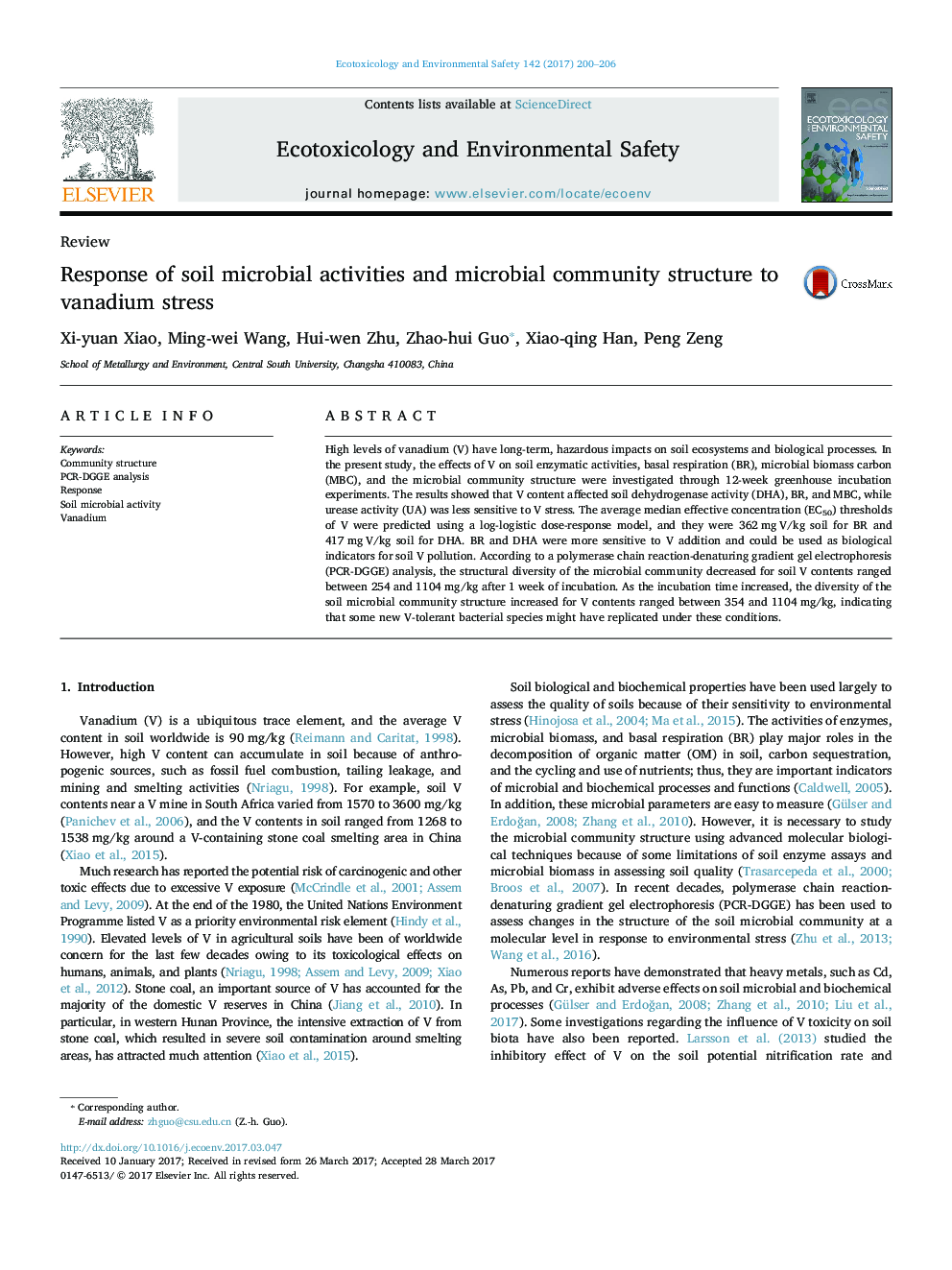| Article ID | Journal | Published Year | Pages | File Type |
|---|---|---|---|---|
| 5747645 | Ecotoxicology and Environmental Safety | 2017 | 7 Pages |
Abstract
High levels of vanadium (V) have long-term, hazardous impacts on soil ecosystems and biological processes. In the present study, the effects of V on soil enzymatic activities, basal respiration (BR), microbial biomass carbon (MBC), and the microbial community structure were investigated through 12-week greenhouse incubation experiments. The results showed that V content affected soil dehydrogenase activity (DHA), BR, and MBC, while urease activity (UA) was less sensitive to V stress. The average median effective concentration (EC50) thresholds of V were predicted using a log-logistic dose-response model, and they were 362 mg V/kg soil for BR and 417 mg V/kg soil for DHA. BR and DHA were more sensitive to V addition and could be used as biological indicators for soil V pollution. According to a polymerase chain reaction-denaturing gradient gel electrophoresis (PCR-DGGE) analysis, the structural diversity of the microbial community decreased for soil V contents ranged between 254 and 1104 mg/kg after 1 week of incubation. As the incubation time increased, the diversity of the soil microbial community structure increased for V contents ranged between 354 and 1104 mg/kg, indicating that some new V-tolerant bacterial species might have replicated under these conditions.
Related Topics
Life Sciences
Environmental Science
Environmental Chemistry
Authors
Xi-yuan Xiao, Ming-wei Wang, Hui-wen Zhu, Zhao-hui Guo, Xiao-qing Han, Peng Zeng,
